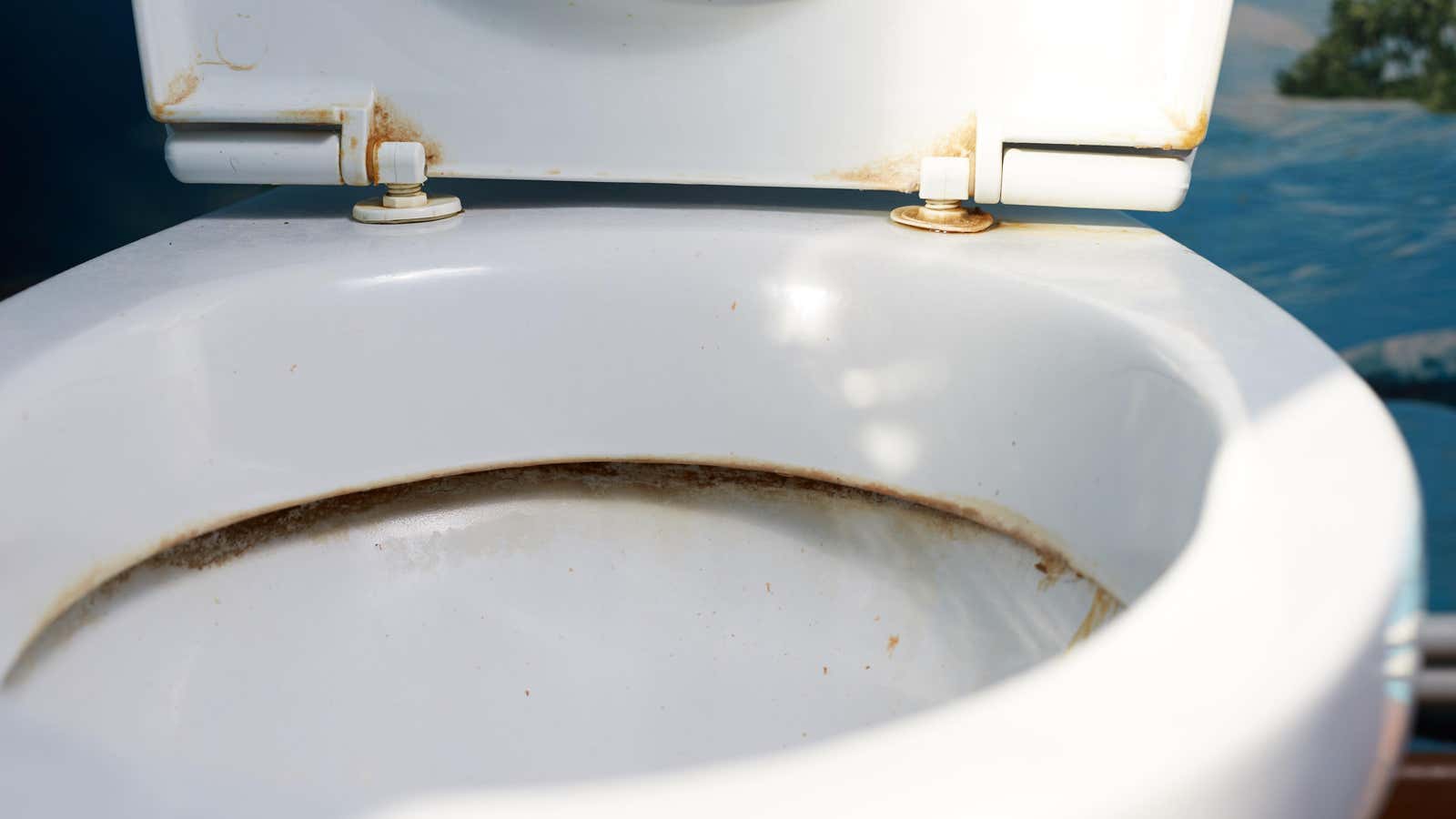How to Clean a Toilet From Hard Water Stains

After a long day of traveling, you finally return home after a while and head straight for the bathroom and familiar toilet. Except that instead of the shiny white toilet you left behind, you find it full of brown lines and a ring. This is (probably) because you live in 85% of the US with hard water.
If you’ve been away for a short period of time, your regular cleanser and a quick swish of your toilet brush should take care of any new stains. But stains that have been there for weeks (or months, or years) will be much more permanent. Here’s how to get rid of hard water stains on your toilet.
What causes hard water stains in a toilet?
Hard water contains dissolved minerals such as calcium, magnesium and iron. When hard water dries on surfaces like chrome sink faucets, it often leaves behind limescale white marks (technically mineral deposits).
This residue can end up in the dry parts of your toilet too, but if your toilet is white, you probably won’t notice it. It is much more difficult to ignore brown or rusty rings or spots, which are usually the result of the presence of iron or manganese compounds in the water.
How to remove hard water stains from the toilet
Start with vinegar and baking soda , then move on to other methods:
Vinegar and baking soda
- Pour about 1 cup of white vinegar into the toilet over the stains.
- Sprinkle stains in a bowl with 1 cup of baking soda and then add another cup of vinegar. Let it sizzle for 10-15 minutes.
- Mix the vinegar/baking soda solution with a toilet brush and scrub the bowl with it.
- Leave on for about 30 minutes, then clean the bowl again and rinse. If the spots are still there, you can repeat the process.
vinegar and borax (or salt)
This is best to try when you plan to be at home all or most of the day:
- Make a paste of borax (or salt) and white vinegar .
- Apply a thick layer to any stains or rings near the edge of the toilet.
- Spray with vinegar throughout the day until the paste dries.
- After 8-10 hours, use a toilet brush to finish cleaning the entire bowl and flush.
Lemon acid
Do not attempt to use citric acid to clean the toilet if your home has a septic system. Otherwise, here’s what to do:
- Remove water from the toilet.
- Spray any dry patches on the surface of an empty bowl with water, then immediately sprinkle the stains with citric acid powder.
- Leave overnight.
- The next day, clean the bowl with a toilet brush.
- Rinse to rinse.
Pumice
While using a pumice stone or stick will likely remove the toughest hard water stains on a toilet, it should be used as a last resort and not as a primary method. This is because pumice stone can scratch porcelain toilets and permanently damage those made of marble, laminate, plastic, or fiberglass, so don’t even try this method if you have any of these.
If you have a porcelain toilet and there are no other options, make sure both the pumice stone and the painted surface are completely damp. Then gently rub the stains or rings with a damp stone until they are gone. Wash it all off with the final flush.